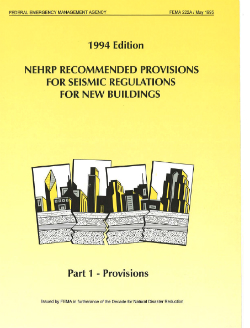
These provisions present criteria for the design and construction of buildings and non-building structures subject to earthquake ground motions. Their purposes are to minimize the hazard to life for all buildings and non-building structures, to increase the expected performance of higher occupancy structures as compared to ordinary structures, and to improve the capability of essential facilities to function during and after an earthquake. Because of the complexity of and the great number of variables involved in seismic design (e.g., the variability in ground motion, soil types, dynamic characteristics of the structure, material strength properties, quality assurance and control, and construction practices), these provisions present only minimum criteria in general terms.
These minimum criteria are considered to be prudent and economically justified for the protection of life safety in buildings subject to earthquakes at any location in the United States. It must be emphasized that absolute safety and prevention of damage even in an earthquake event with a reasonable probability of occurrence cannot be achieved economically for most buildings. The "design earthquake" ground motion levels specified herein may result in both structural and nonstructural damage . For most structures designed and constructed according to these provisions, it is expected that structural damage from a major earthquake may be repairable but it may not be economical. This would depend upon a number of factors including the structure framing type, materials, and details of construction actually used. For ground motions larger than the design levels, the intent of these provisions is that there be a low likelihood of building collapse.








